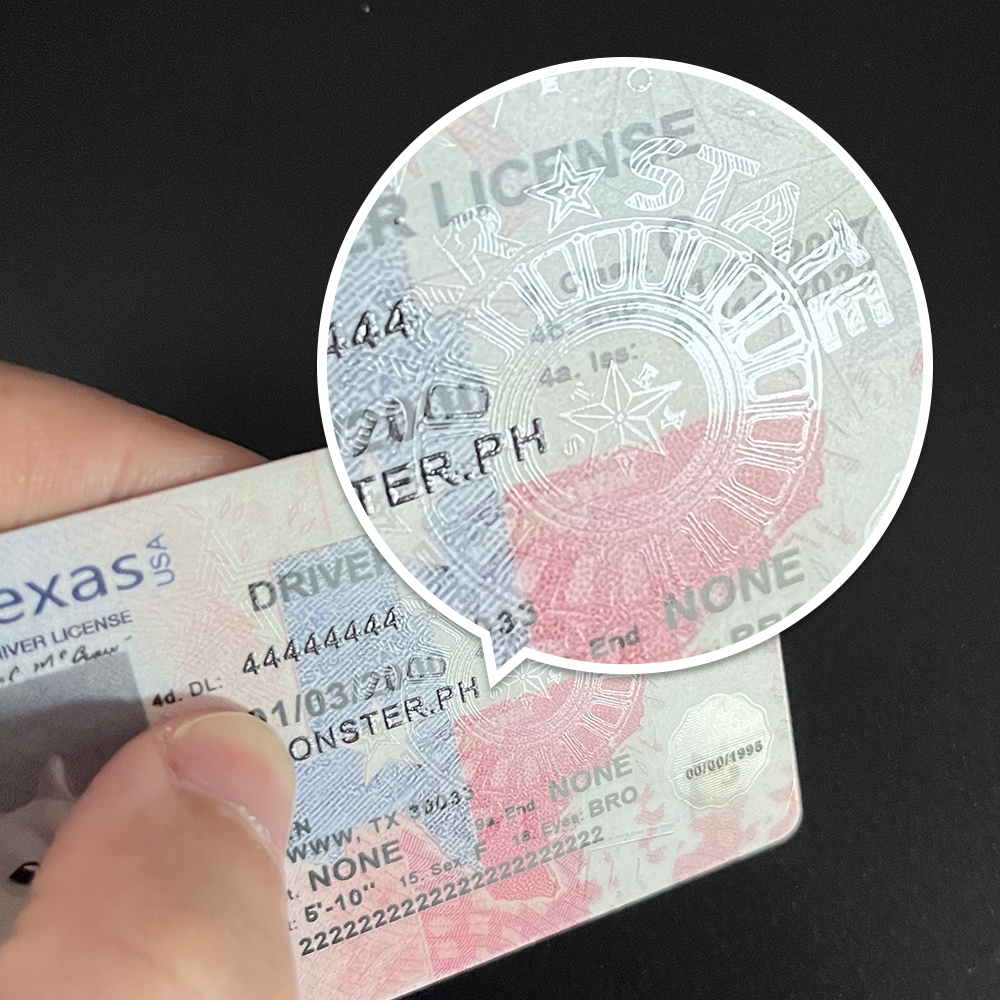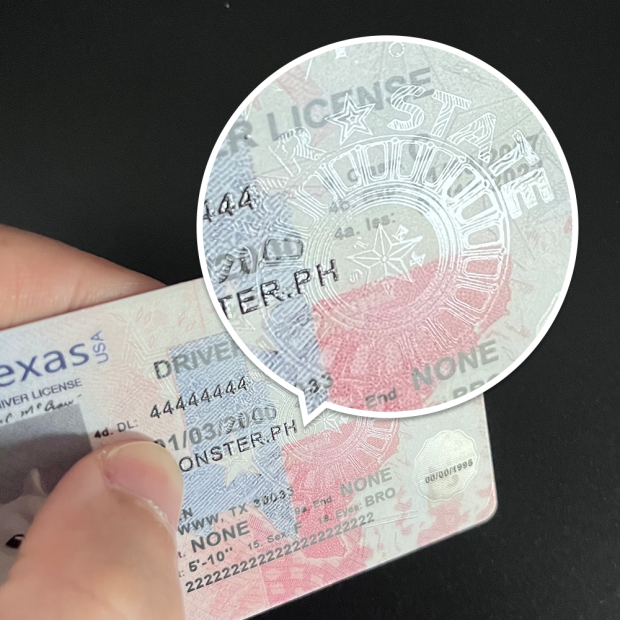Identity verification is a crucial aspect of modern – day society. It is essential for everything from accessing government services to conducting financial transactions. In the United States, the Real ID has emerged as a significant step in standardizing and enhancing the security of identification documents.
Understanding Real ID
The Real ID Act was passed in 2005 in response to the 9/11 Commission’s recommendations. It sets minimum security standards for state – issued driver’s licenses and identification cards. A Real ID – compliant document features specific security features, such as a common machine – readable technology and enhanced identity verification processes during issuance.
One of the main goals of the Real ID is to improve the reliability and accuracy of identification. Before a state – issued ID can be considered Real ID – compliant, the applicant must provide certain documents to prove their identity, such as a birth certificate or a valid passport, as well as proof of social security number and residency.

Real ID – compliant cards are marked with a star in the upper – right corner. This star indicates that the card meets the federal government’s security requirements. Starting from a certain date, individuals without a Real ID – compliant document will not be able to use their state – issued ID to board domestic flights or access certain federal facilities.
The Need for Stronger ID Verification
In today’s digital age, the threats to identity security are constantly evolving. Traditional forms of ID verification, such as passwords and PINs, are no longer sufficient. Hackers are becoming more sophisticated, and data breaches are a common occurrence. This has led to a growing need for more secure methods of identity verification.
Quantum – encrypted ID verification offers a potential solution to these security challenges. Quantum mechanics, the branch of physics that deals with the behavior of matter and energy at the smallest scales, has unique properties that can be harnessed for security purposes. Quantum encryption is based on the principles of quantum entanglement and superposition.

Quantum – Encrypted ID Verification
Quantum – encrypted ID verification uses quantum keys for authentication. These keys are generated based on the principles of quantum mechanics and are extremely difficult to intercept or replicate. When a user attempts to verify their identity, a quantum – encrypted communication channel is established between the user and the verification server.
The quantum key is used to encrypt and decrypt the identity information. If an unauthorized party tries to intercept the communication, the act of measurement in quantum mechanics will cause the quantum state to collapse, alerting both the user and the server that there has been an attempt at eavesdropping. This makes quantum – encrypted ID verification highly secure against traditional and even some of the emerging forms of cyber – attacks.
Another advantage of quantum – encrypted ID verification is its ability to provide real – time verification. The quantum – based authentication process can be completed in a matter of milliseconds, making it suitable for a wide range of applications, from online banking to access control systems in high – security facilities.
The Future of ID Verification: Real ID and Quantum – Encryption Integration
The future of ID verification may well involve the integration of Real ID and quantum – encrypted technologies. By combining the physical security features of Real ID with the advanced encryption capabilities of quantum – encryption, a more comprehensive and secure identity verification system can be created.
For example, a Real ID – compliant card could be embedded with a quantum – enabled chip. This chip would be used to generate and store quantum keys, and the cardholder’s identity information could be encrypted using these keys. When the card is presented for verification, the quantum – encrypted information can be transmitted securely to the verification system.
This integration would not only enhance the security of identity verification but also improve the user experience. With quantum – encrypted ID verification, users can be more confident that their personal information is protected, and the verification process can be made more seamless and efficient.
Implementation Challenges
However, implementing a system that combines Real ID and quantum – encrypted ID verification is not without its challenges. One of the main challenges is the cost of quantum – encryption technology. Quantum – enabled devices and infrastructure are currently expensive to develop and maintain. This could pose a barrier to widespread adoption, especially for smaller organizations or developing countries.
Another challenge is the need for a skilled workforce. Quantum mechanics is a complex field, and there is a shortage of professionals with the necessary expertise to develop, implement, and manage quantum – encrypted ID verification systems. Training programs and educational initiatives will be required to address this skills gap.
Interoperability is also a concern. Different states in the US have their own Real ID implementation strategies, and ensuring that quantum – encrypted ID verification systems can work seamlessly across these different platforms will require careful standard – setting and coordination.
Common Problems and Solutions
-
Problem: Lack of Awareness about Real ID Requirements
Many individuals may not be aware of the Real ID requirements or the implications of not having a Real ID – compliant document. This can lead to inconvenience, such as being unable to board a domestic flight.
Solution: State and federal governments should launch comprehensive awareness campaigns. These campaigns can include public service announcements, informational brochures, and online resources. Additionally, drivers’ license offices can provide detailed information to applicants about Real ID requirements during the application process.
-
Problem: Difficulty in Obtaining Required Documents for Real ID
Some people may face difficulties in obtaining the necessary documents, such as a birth certificate or proof of residency. This could be due to lost documents, complex administrative procedures, or lack of access to certain records.
Solution: Governments can simplify the process of obtaining these documents. This can involve digitizing records, providing online application options, and offering assistance to individuals who are having trouble obtaining the required paperwork. For example, some states could provide a helpline or in – person assistance centers for those who need help.
-
Problem: Concerns about Privacy in Quantum – Encrypted ID Verification
Some individuals may be concerned about the privacy implications of quantum – encrypted ID verification. They may worry that their personal information could be misused or accessed by unauthorized parties.
Solution: Clear privacy policies should be established and communicated to the public. These policies should detail how personal information is collected, stored, and used in the quantum – encrypted ID verification process. Additionally, strict regulations and oversight mechanisms can be put in place to ensure that privacy rights are protected.
-
Problem: Compatibility Issues between Existing ID Systems and Quantum – Encryption
Many existing identity verification systems may not be compatible with quantum – encryption technology. Upgrading these systems can be a complex and costly process.
Solution: Standards and guidelines for integrating quantum – encryption into existing ID systems should be developed. This can involve working with technology vendors to create compatible software and hardware solutions. Additionally, phased – implementation approaches can be adopted to minimize disruption and cost.
-
Problem: Lack of Trust in Quantum – Encryption Technology
Some organizations and individuals may be hesitant to adopt quantum – encryption technology due to a lack of trust. They may be concerned about the reliability and stability of quantum – based systems.
Solution: Conducting extensive testing and validation of quantum – encrypted ID verification systems can help build trust. Demonstrating the security and performance of these systems through real – world pilots and case studies can also be effective. Additionally, industry – wide certifications and standards can be established to ensure the quality and reliability of quantum – encryption technology.
Fake ID Pricing
unit price: $109
| Order Quantity | Price Per Card |
|---|---|
| 2-3 | $89 |
| 4-9 | $69 |
| 10+ | $66 |


